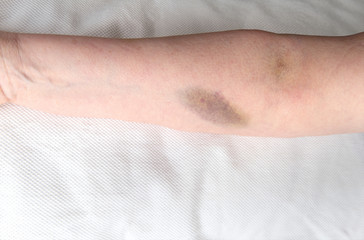
Understanding Hematomas: An IV Therapy Complication Nurses Must Know
IV therapy is a common and essential procedure in modern healthcare, but it does not come without risks. One of the more visible and potentially uncomfortable complications is hematoma—a localized collection of blood outside the blood vessels that can occur during or after intravenous (IV) insertion. While often minor, hematomas can lead to patient distress, delayed treatment, or even more serious complications if not properly managed.
In this blog, we’ll explore the symptoms, causes, contributing factors, treatment strategies, and prevention methods related to IV therapy-related hematomas.
What Is a Hematoma?
A hematoma in the context of IV therapy typically results from blood leaking into the surrounding tissue due to vessel trauma, often occurring during IV catheter insertion or removal. This accumulation of blood beneath the skin can appear as a bruise or swelling and may be tender or painful to the patient.
Symptoms of a Hematoma
Recognizing the signs early is crucial for prompt intervention. Symptoms include:
- Swelling at or near the IV insertion site
- Discoloration (blue, purple, or black bruising)
- Tenderness or pain around the site
- Firmness upon palpation
- Skin temperature changes (cool or warm to the touch)
- Limited mobility or discomfort in the affected limb (in more severe cases)
Causes and Contributing Factors
Hematomas can occur for a variety of reasons during IV therapy. Key causes and contributing factors include:
Causes:
- Vein puncture during insertion (especially if the catheter goes through the vessel wall)
- Failure to properly anchor the vein during insertion
- Multiple unsuccessful insertion attempts
- Removing the catheter without applying sufficient pressure
Contributing Factors:
- Fragile or thin-walled veins, common in elderly or pediatric patients
- Anticoagulant therapy or underlying coagulopathy
- Use of large-gauge catheters in small veins
- Poor technique or inadequate vein visualization
- Inadequate hemostasis after catheter removal
Treatment and Nursing Interventions
Once a hematoma has formed, the following interventions can help manage the complication:
- Immediately remove the IV catheter
- Apply firm, direct pressure to the site for at least 2–5 minutes or longer if the patient is on anticoagulants
- Elevate the limb to reduce swelling
- Apply a cold compress intermittently during the first 24 hours to decrease bleeding and swelling
- Monitor the site for signs of progression, infection, or compromised circulation
- Document the incident thoroughly, including size, location, and patient response
- Educate the patient on signs of worsening and when to report new symptoms
In severe or unresolved cases, referral for further evaluation may be warranted.
Prevention Methods
Prevention is always preferable to treatment. Nurses can reduce the risk of hematoma formation by following these best practices:
- Use the smallest gauge catheter necessary for the therapy
- Ensure proper vein selection, avoiding fragile or compromised vessels
- Utilize vascular visualization technology (e.g., ultrasound, near-infrared) for difficult insertions
- Anchor the vein and use proper technique to minimize vessel trauma
- Limit insertion attempts to two per nurse, then seek assistance
- Apply pressure immediately and adequately after catheter removal
- Reassess and monitor the site frequently, especially in high-risk patients
Elevate Your Practice with Continuing Education
Understanding and managing IV therapy complications like hematomas is vital for ensuring safe, effective patient care. Staying current with evidence-based practices helps reduce risk and improve patient outcomes.
For a comprehensive look at peripheral IV therapy, including complications and prevention strategies, we invite you to explore our online continuing education course:
👉 Basics of Peripheral IV Therapy: Current Standards of Practice
This course is perfect for both new and experienced nurses and covers essential topics including catheter types, insertion techniques, complications, and legal considerations. Accessible anytime, it allows you to learn at your own pace while earning continuing education credit.
Invest in your knowledge. Elevate your care. Empower your patients.

